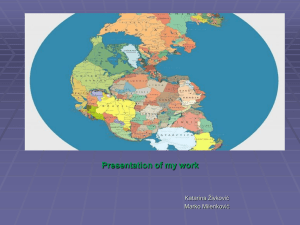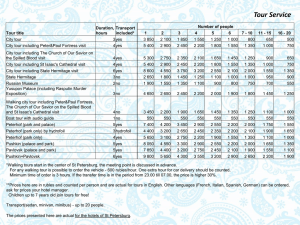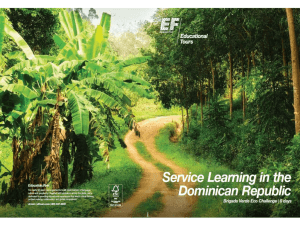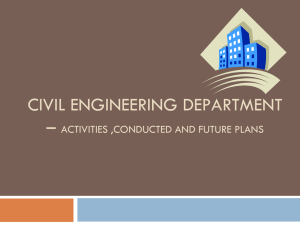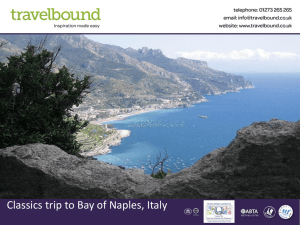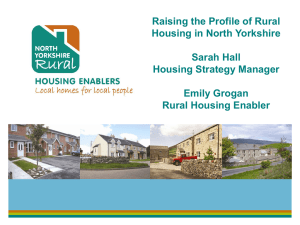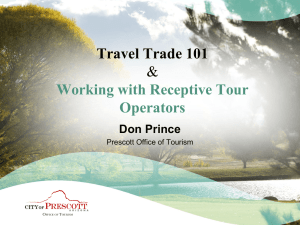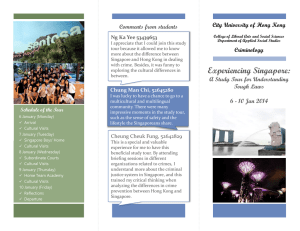Document
advertisement
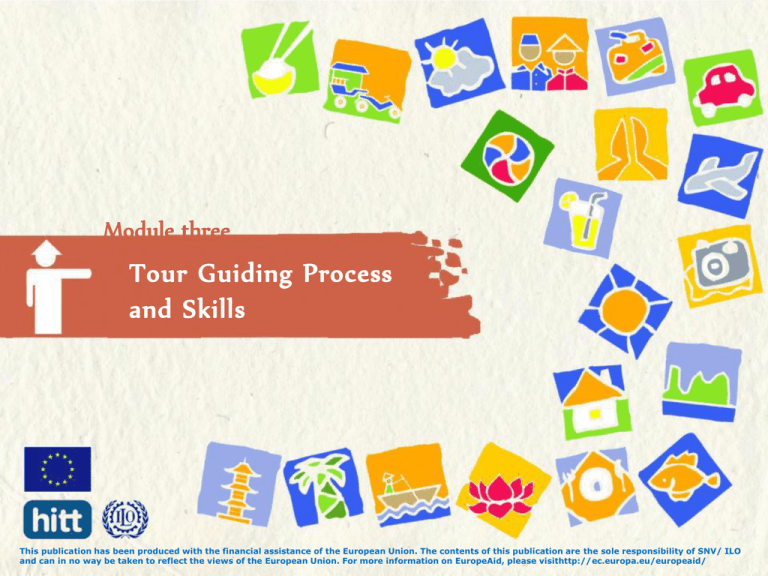
Module three Tour Guiding Process and Skills This publication has been produced with the financial assistance of the European Union. The contents of this publication are the sole responsibility of SNV/ ILO and can in no way be taken to reflect the views of the European Union. For more information on EuropeAid, please visithttp://ec.europa.eu/europeaid/ 2 Module Overview Topic 1: Identify local tourism attractions and services available in your destination Topic 2: Develop an engaging tour plan Topic 3: Prepare for work Topic 4: Receive Tourists Topic 5: Guide Tourists Topic 6: Close a tour. Topic One Identify tourism attractions & services Activity 1: Identify local tourism attractions • • Watch a short video clip of a local tourism destination. Identify tourism attractions you have seen in the video clip. 4 Natural attractions • Landscapes • Mountains • Forests • Lakes and rivers • Beaches and sea • Special flora species • Special fauna species. 5 Historical and cultural attractions • Houses • Museums • Temples and pagodas • Parks • Music and performance • Foods • Clothes • Festivals • Local markets. 6 Examples of tourism attractions 7 8 Public services Embassy Key tourism services • Hotels • Restaurants • Entertainment facilities • Tour and travel facilities • Shopping facilities • Fitness and spa facilities 9 Activity 2: Interpret key tourist map symbols • • • Take a flashcard with a map symbol. Show the card and describe it to the group and suggest what it is about. Other learners give comments 10 11 Reading Tourist Maps • Direction • Scale North • Symbols South • Itinerary • Distance • Travelling time • Attractions • Services and activities • Stop over points East West Mountain River Temple Valley Water fall Kilometer Near Far Long Short Activity 3: Map work Working in pairs, use a local tourist map to: • • • • Identify key places tourists will want to go to(e.g. attractions such as museums, temples, parks, etc.) Identify places suitable for tourists to eat and sleep. Locate tourism services such as banks/ATMs, post offices, embassies Estimate the time to travel between two points the facilitator stipulates. 12 Topic two Develop an engaging tour plan Identify available local tourism products & services • Attractions • Activities • Accommodation services • Restaurants • Package tour and travel services. 14 15 Tour planning principles: Adding activities • • • • • • • Cycling Kayaking Shopping Wearing local traditional costume Traditional dancing Weekly markets Others??? Tour Programme View Craft Stop Eat drink washrooms Tour planning principles: Finding stops 16 Activity 4: Develop an engaging tour 17 Work in groups of 5: • • • • Identify an existing tour. Add at least three additional activities for tourists or stops to this tour to enrich the tourist experience. Present your tour Others comments and discuss Tour planning principles: Design itinerary 18 Activity 5: Tour planning 19 In groups of 5, using local tourists map, design a tour itinerary with the following information: • • • • Timing for an itinerary: start and finish time, lunch time, site visiting time, walking, trekking time, stop over time, etc.? Means of transport: bicycle, car, boating or on foot Identify main attractions/ sights to visit Identify supporting services: food and beverage, overnight... Group present the tour to the rest of the class. Topic three Prepare for work 21 Topic contents Personal hygiene and appearance Tour preparation Personal hygiene and appearance Clean & Combed Hair Clean shaved Right posture Tidy & pressed Shirt Decent Pants 22 Clean Hands: Dirty Hands Which would you prefer to cook your meal? 23 The importance of Personal Hygiene 1. Protect your health 2. Prevent infections 3. Build confidence 4. Look professional 24 Key Hygiene Principles 1. Shower or bath every day 2. Tidy hair: Wash your hair (use shampoo) frequently, comb your hair 3. Wash your hand with soap after eating, smoking and using bathroom 4. Short nail/ no nail polish 5. Brush your teeth after every meal 6. Wash your clothes frequently 7. Change your clothes every 1 or 2 days 8. Keep your shoes clean and polish 9. Use deodorant 25 26 Hand washing steps 2. Liquid soap 1. Wet your hands 5. Wash under your nails 6. Rinse- 10 seconds 3. Lather and scrub20 seconds 7. Dry hands 4. Wash between your fingers 8. Turn off the tap Looking Professional: your clothes 1. What to wear? 2. How to wear it 3. Condition of clothes: • Clean • Neat • Good condition 27 Activity 6: Practice personal hygiene • • Learners practice hand washing: explain which steps they are practicing and reason why. Every leaner has 5 minutes to prepare their appearance and ask classmate to check 28 29 Topic three Tour preparation The importance of Tour Preparation If we fail to plan, we plan to fail! 30 31 Tour preparation: step by step Itinerary Travel documents Attractions information Necessary items Passport Permit Ticket tour plan Programme Itinerary Activity 7: Tour preparation Divide into 5 groups; each group gets a travel itinerary. • • • Read travel itinerary in your group Discuss the contents of your travel itinerary Discuss what a local tour guide needs to prepare for guiding visitors for this travel itinerary. 32 33 Reading the itinerary Date and time Visiting route Major attraction sites Service and activities
